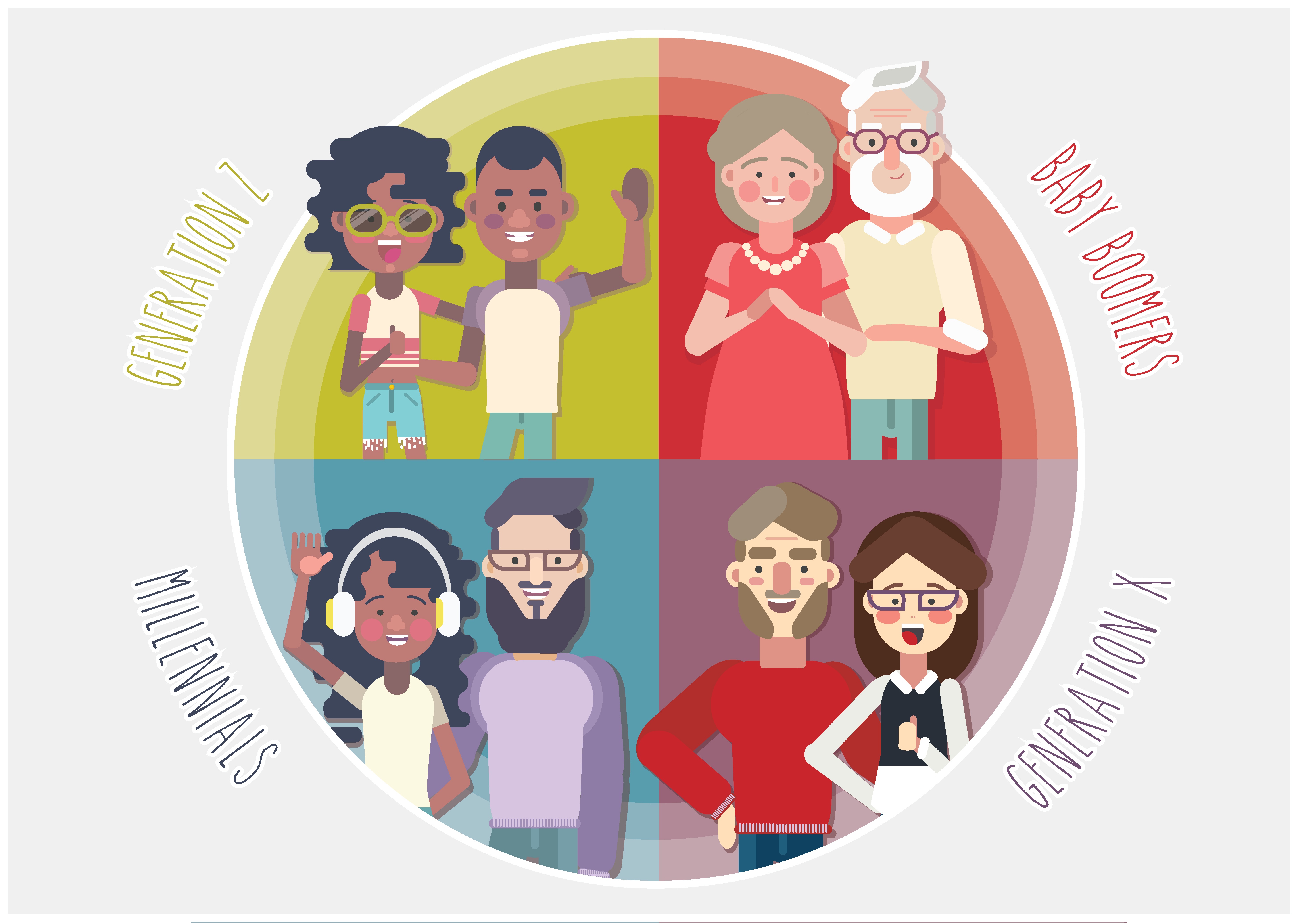Adjusting for an Aging Population in Municipal Waste Education and Outreach Programs

One of the greatest challenges we hear from municipal waste communications teams is how to address their aging population. “High-tech solutions are great,” city administrators say, “but we’re a retirement community, and seniors don’t have access to computers or smartphones, let alone know how to use them.”
While these statements used to be true, technological illiteracy is not nearly as prevalent as it used to be, and the numbers tell a very different story.
Managing your recycling education and outreach programs with an aging population isn’t nearly as challenging as it used to be.
Rethink The Audience.
 According to the most recent U.S. Census report, the states with the highest percentage of residents aged 55 and above are: Maine, Vermont, West Virginia, Florida and Montana [see Chart below]. And yet, census data shows that the actual population in these states is spread evenly across all age groups, with 25- to 54-year olds maintaining a healthy lead. Even if we look at this information on a town-by-town basis, the cities with the highest median age group are: Scottsdale, Arizona (average age 45.4); Clearwater, Florida (43.8); and Cape Coral, Florida (42.2) [U.S. Census Brief, 2010], which is much lower than is commonly assumed.
According to the most recent U.S. Census report, the states with the highest percentage of residents aged 55 and above are: Maine, Vermont, West Virginia, Florida and Montana [see Chart below]. And yet, census data shows that the actual population in these states is spread evenly across all age groups, with 25- to 54-year olds maintaining a healthy lead. Even if we look at this information on a town-by-town basis, the cities with the highest median age group are: Scottsdale, Arizona (average age 45.4); Clearwater, Florida (43.8); and Cape Coral, Florida (42.2) [U.S. Census Brief, 2010], which is much lower than is commonly assumed.
The fact is that even the most popular retirement communities are part of a larger social structure that is decidedly middle aged. Focusing the bulk of your communications on seniors is a strategic mistake, one that may cost you in terms of poor compliance rates, high contamination rates and wasted dollars spent on ineffective resident outreach.

Chart 1: Age and Sex Composition: 2013, U.S. Census Data
Rethink Your Strategy.
US residents currently access the internet at an astonishing rate of 87 percent, and the 50+ crowd is easily keeping pace. Meanwhile, more than 90 percent of 25-to 50-year olds (Millennials and younger Generation Xers) are plugging in regularly. With the potential to change the way we recycle, not just now but well into the future, this demographic group should be central to your education and outreach efforts.
In fact, 25- to 50-year olds offer a powerful opportunity to change the way your waste and recycling programs work. But while their sheer numbers give them the ability to shift the way municipal waste is managed as a whole, they are constantly on the run, juggling family, work and social lives. They are multi-taskers with busy schedules, and they need tools that fit their lifestyles.
In this age of apps and information, Millennials and younger Gen-Xers are looking for single solutions that reduce the digital clutter that bombards them regularly. As you build out your overall communications strategy, be sure to consider solutions that adapt to the demographic you serve. Failure to provide a communication platform that fits your residents’ lifestyle, regardless of their age, will result in an ineffective program, which means a huge waste of time and money.

Technology continues to proliferate, and people who are aging into the senior category have been using computers for at least half of their adult lives. Thanks to this demographic shift, as many as 76 percent of older boomers (aged 60-69) now use the internet regularly and nearly two-thirds of 70- to 87-year olds plug in at some level, though they are less likely to have a computer or internet-enabled mobile device at home. Interestingly, seniors now use significantly more tablets (combined with internet-enabled eReaders) than mobile phones. Seniors don’t have to be left behind.
Still, additional steps can be taken to ensure this age group isn’t left out. Recycling education technology today has advanced far beyond simple phone apps, so programs can be adapted to overcome the unique challenges an older demographic presents. Easy-to-use, intuitive interfaces can increase usage rates, and supplementary communication techniques (such as print posters and text notifications) can help increase compliance rates and improve the efficacy of education and communication programs across the board.